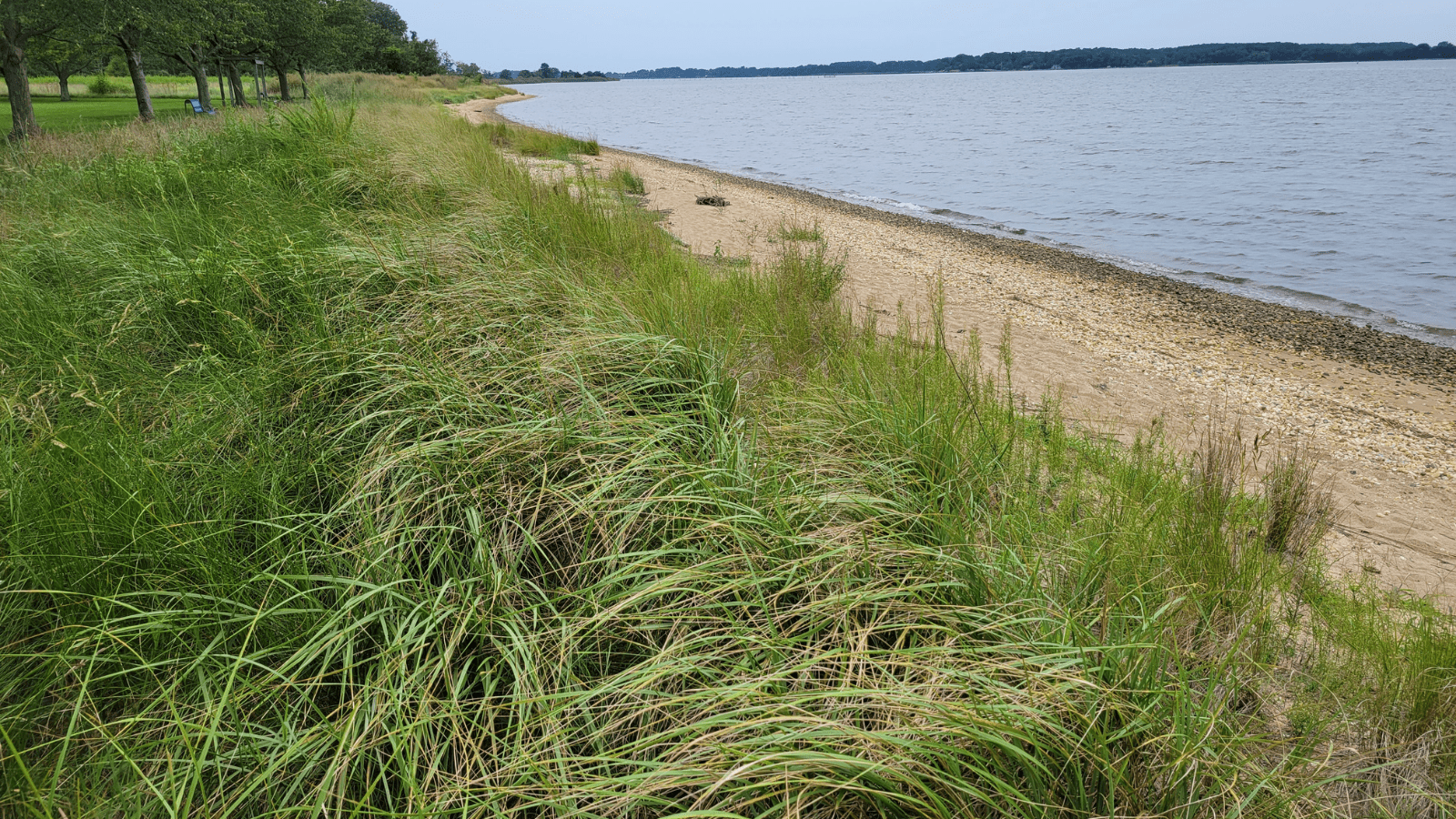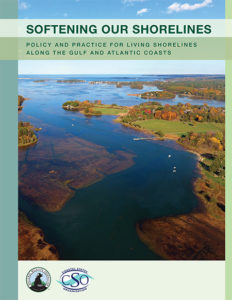We have much more to do and your continued support is needed now more than ever.
Living Shorelines Build Resilient Coasts

A History of Living Shorelines in Maryland
What is a living shoreline? Well, many people have a general idea. But for those that are unfamiliar, the term ‘living shoreline’ defines many kinds of shoreline restoration projects. The key word is living! I would describe them as restoration projects that use natural habitat features, like marsh grasses or oysters, to reduce shoreline erosion. The goal of a living shoreline is to create a dynamic, yet resilient, habitat that mimics natural coastal processes.
It all started with a law that created the Shore Erosion Control Program, passed back in 1968 by the Maryland General Assembly. The program, now called the Maryland Department of Natural Resource’s Shoreline Conservation Service, was established to provide technical and financial assistance to landowners to help them implement shoreline enhancement projects (the term ‘living shoreline’ was not yet created). Along with the program, the state started a revolving loan fund, where landowners could apply for zero interest loans for these types of projects. This series of events initiated an undertaking to test out nature-based solutions to shoreline erosion problems.
One of the pioneers of using living plants to enhance and stabilize shorelines was the late Dr. Edward Garbisch. Dr. Garbisch conducted some of the first experiments to propagate and utilize native marsh grasses, the Spartina species, to reduce excessive shoreline erosion. He was creating living shorelines well before the term was coined. Back in the 1970’s, the typical shore erosion control method was putting up a bulkhead or lining the shore with a riprap revetment.
The problem with these methods is they eliminate the intertidal zone which is critical habitat for juvenile wildlife like fish, crabs, and invertebrates. Dr. Garbisch found that the use of marsh grasses to stabilize shorelines, instead of structural solutions, can be a superior and cost-effective method in many settings. Dr. Garbisch was promoting a method that works with nature instead of against it.
Nature-based solutions
After Hurricane Isabel hit Maryland in 2003, DNR found their nature-based shoreline projects held up extraordinarily well. This sparked an initiative for a group of experts to develop the term “Living Shoreline” to brand these nature-based solutions and help to promote them. As more and more projects were implemented each year, Bhaskar Subramanian, Chief of the Shoreline Conservation Service, spearheaded a research study to determine how well these projects were functioning. They found that living shorelines were cost effective, resilient to storm events, and provided excellent wildlife habitat.
This research contributed to the passing of the 2008 Living Shorelines Protection Act, which states that “improvements to protect a person’s property against erosion shall consist of nonstructural shoreline stabilization measures (i.e. living shorelines) except where the person can demonstrate such measures are not feasible”. Essentially, one must prove that their property is not suitable for a living shoreline before installing a bulkhead or revetment. This has helped to educate homeowners and incentivize living shorelines in Maryland, resulting in more resilient shores and the preservation of crucial wildlife habitat.
Should other coastal states follow suit? Virginia recently passed legislation similar to Maryland’s and North Carolina is considering a similar move. In states where there is sufficient proof that living shorelines are a resilient alternative to structural shoreline stabilization, this makes a lot of sense.

Some other actions that states and environmental organizations can take to help move the needle include educating homeowners on the benefits of nature-based shoreline solutions and providing trainings to marine contractors to ensure they have the tools and skills to successfully implement these projects.
To learn more read our recent publication, Softening Our Shorelines.





















